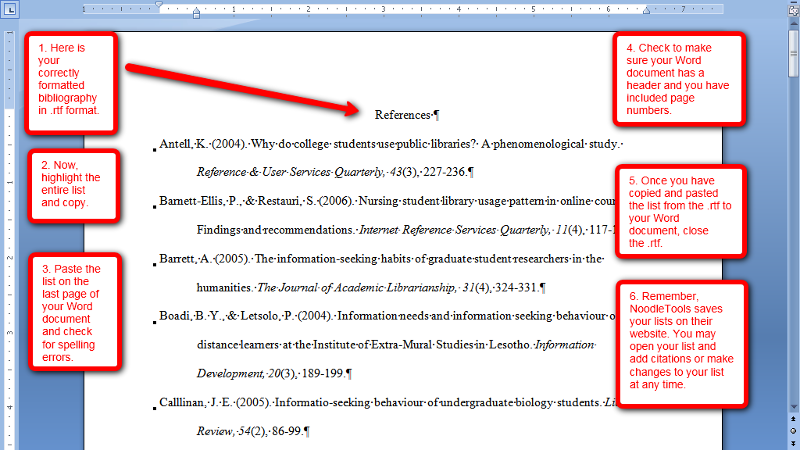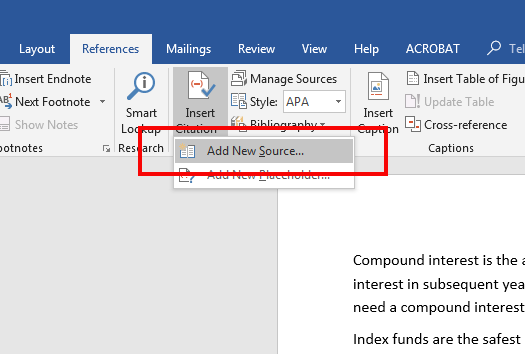
That means creating an annotated bibliography by itself could be an assignment, or you may have to include one as part of your research paper, journal submission, or other project. An annotated bibliography is basically a reference page that includes your comments and insights on each source.Īn annotated bibliography can be a document all on its own, or part of a bigger document. There are some cases in which a professor or journal might request an annotated bibliography. A reference page, on the other hand, only includes entries for works that were specifically cited in the text of the paper. A bibliography usually includes all materials and sources that were used to write the paper. The difference between a bibliography and a reference page is a matter of scope. Q: What should not be on an APA reference page?ĭifference between an APA bibliography and a reference page.APA reference page formatting: Alphabetizing by surname.Understanding APA reference page format.Difference between an APA bibliography and a reference page.

Here’s a run-through of everything this page includes: The most important thing is to use the label “References” when writing your paper since APA style recommends including a reference page. The guidelines presented here come from the 7 th edition of the APA’s Publication Manual.Ī note on APA reference page style: In this guide, “bibliography” and “references” may be used interchangeably, even though there are some differences between the two.
APA WORD FOR WORD CITATION HOW TO
More specifically, you will learn how to create a reference page. In this guide, you will learn how to successfully finish a paper by creating a properly formatted APA bibliography. If you are at the point in your article or research paper where you are looking up APA bibliography format, then congratulations! That means you’re almost done. “Bibliography” also may be used interchangeably, even though there are some differences between the two. The introduction should include a description of how the rest of the paper is organized and all sources are properly cited throughout the paper.In APA, the “Works Cited” page is referred to as a “Reference List” or “Reference Page”.

There should be narrative links between sentences and paragraphs so that the reader is able to follow your argument. It must be cohesive and possess a logically organized flow of ideas this means that the various parts are connected to form a unified whole. The Big Picture ((from article) importance of good academic writing) - Unlike fiction or journalistic writing, the overall structure of academic writing is formal and logical. However, most college-level research papers require careful attention to the following stylistic elements:ĩ. (from article) importance of good academic writing The accepted form of academic writing in the social sciences can vary considerable depending on the methodological framework and the intended audience. Like specialist languages adopted in other professions, such as, law or medicine, academic writing is designed to convey agreed meaning about complex ideas or concepts for a group of scholarly experts. Characteristics of academic writing include a formal tone, use of the third-person rather than first-person perspective (usually), a clear focus on the research problem under investigation, and precise word choice. *thesis driven*: starting point is a particular idea or position (from article) academic writing definition a style of expression that researchers use to define the intellectual boundaries of their disciplines and specific areas of expertise *no* use of *informal language* avoid using filler words (ex like) when making arguments, they should always be backed by reason (other sources) backed by *literature* and previous research different parts should form a *cohesive whole* TERMS IN THIS SET (17) academic writing style - is *formal and logical* ALWAYS PROVIDE title and author +63 more terms

should be short and always give credit to the original writer to avoid plagiarism Indirect Quotations expresses the meaning of someone else's words without using that person's exact language or quotation marks. main idea and major details included Quotation quote the source to contribute to your argument is approximately the same length as the original passage summarize reword only the main idea and the major supporting details (leave out the minor supporting details) includes both major and minor details from the original passage avoids plagiarism by giving credit to the original author TERMS IN THIS SET (67) Paraphrasing When you restate another writer's ideas in your own words.


 0 kommentar(er)
0 kommentar(er)
